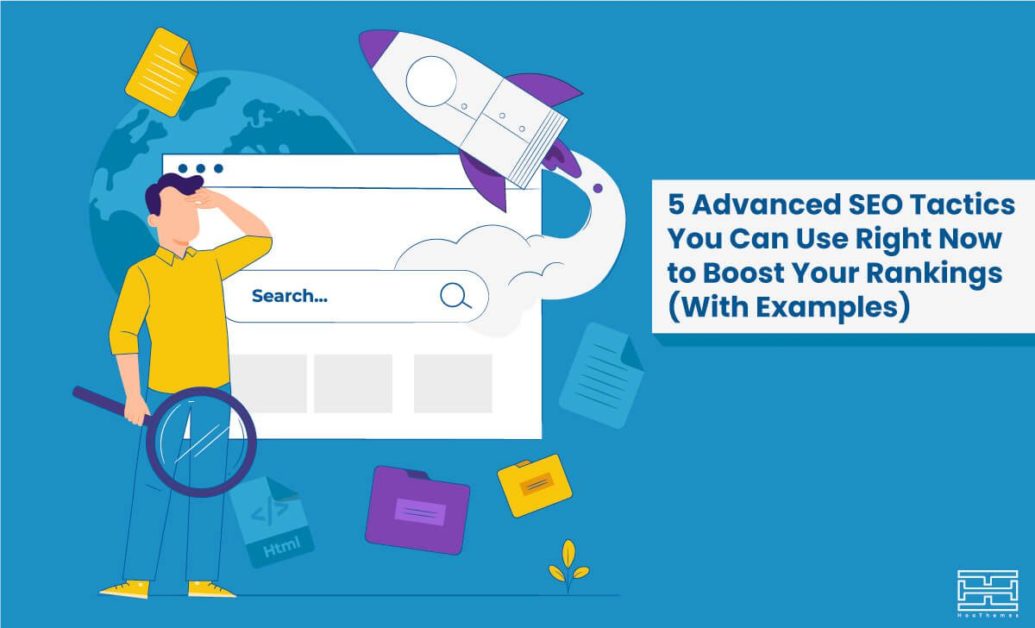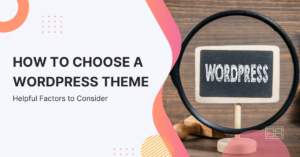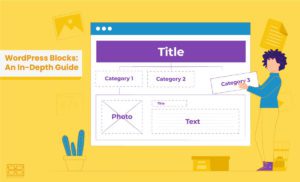I’m the type of SEO who likes to plan and strategize. I love nothing more than to see my 5-year SEO plan conclude exactly as I expected it to, or even better, to my infinite surprise and delight. But I’m also the impatient type. I want SEO results yesterday, and if that can never be, then I want them right now. If you’re similar to me in that regard, this guide is written for you.
Here on HooThemes, I will show you 5 simple-to-do but also advanced SEO tactics you can implement today and right now to improve your Google rankings.
No time to waste, so let’s get started.
Use These 5 Advanced SEO Tactics And Blow up the SERPS Today!
Note: Before we begin, these SEO tactics are “advanced” not because they’re hard to do, but because they’re very deliberate and something only a handful of SEO’s strategically execute on.
Sure, all SEO’s do a smattering of tactics trying to optimize for Google, and whatever sticks, sticks;
but here I will show you 5 ways to predictably move your rankings upward for any keyword you want, regardless of the competition level.
Advanced SEO Tactic #1- Equally Distributed PageRank- AKA Keeping all Blog Posts Only 2 Clicks from the Homepage (2 Tactics)
I bet your homepage is by far the most authoritative page on your site.
For most sites, it’s the same.
To rank higher in Google, you want and need to keep all your content within 3 clicks from your homepage. That way, Google will have no problem crawling your site to find every article on it; and PageRank will easily flow and reach every article within your property, and this even link power distribution will help you rank maximally for every keyword your blog is capable of ranking for (at your site’s domain authority level then).
Here are 2 effective ways to flatten your site architecture while still preserving good UX.
#1- Put Your Categories in Your Menu
Blog categories hold all of your content, and by linking to them from the menu, you essentially make every article on your site reachable from every other article.
For example, this article about Zoom alternatives from Attrock links through their menu to all the main categories on the blog.
When Google-bot crawls this page, all it has to do is follow a link to one of the categories and then start crawling there.
This is a wonderful way to flatten the site architecture and give natural exposure to a lot of content from any starting point within the website.
Notice how I said “a lot of content” and not ”all website content”? That’s because not all blog content is accessible this way.
Content-heavy sites have categories with hundreds of articles in them, and those archive pages are paginated, and pretty much all themes show links to only the first 3-4 paginated pages and then the last one.
Here’s an example from the Blogging Explained blog, which is just a list of recently published articles.
Notice how there are 58 paginated pages of blog post content, yet only the first three and the last one are accessible through hyperlinks? It’s the same thing with category pagination.
The solution here is infinite scroll. When done right, with both SEO and web users in mind, Google-bot can easily crawl the entire category with all of its content, and users can access every post within the category from the said category page.
This solves the click depth problem for you and reduces the user’s frustration that arises from having to click so much to get where they want to go.
Pro tip: another interesting solution is what the folks over at Sortlist have done with their blog categorization.
Namely, they have several parent categories and underneath each, there are several more child categories. I checked and this setup is present on every blog post on their site.
It’s a very effective way to reduce click depth, without employing infinite scroll which is a Javascript technique that usually works, but occasionally doesn’t and this hurts the site’s crawlability and consequently its rankings a lot.
If you’re risk-averse, parent/child categorization is an excellent alternative as it’s all done in HTML.
#2- Have an HTML Sitemap
HTML sitemaps are not the thing of the distant past and are also not just for websites with thousands or tens of thousands of indexed pages (note: check out this gigantic but beautiful New York Times sitemap).
You too can have an HTML sitemap on your small (I presume) blog to instantly get all your content just 2 clicks away from the homepage.
If you have a WordPress site, the easiest way to achieve this is to install a free plugin called Simple Sitemaps to get all your article links in HTML on a single page.
And then put that page in the menu or footer so that Google regularly crawls it.
As an example, I’ll use my sitemap which is in the footer of my site.
As a bonus, whenever I publish a new article the sitemap automatically updates so there’s zero work on my end.
Finally, here’s an old but still relevant video by Matt Cutts where he says HTML sitemaps are a wonderful way to spread out PageRank across the site.
Advanced SEO Tactic #2- Internal Linking on Steroids- Rank Higher for a Target Money Keyword
Pretty much every SEO at this point knows the power of internal linking. It’s common knowledge and SEO best practice at this point, which is both good and bad.
It’s bad because all of your competitors are heavily interlinking their articles; it’s good because it’s a common SEO practice, meaning most SEO’s assume they’ve already mastered internal linking and there is nothing more to learn there.
And there is so much more. I’ll now show you how to rank higher for a specific money page, and I’ll use an example from my site.
This post about HostGator Black Friday deals is my main money page at the moment.
If I can rank it by the time Black Friday comes, I’m going to make a killing with those sweet, hard-earned affiliate sales.
And I now rank position #3, with Google constantly testing me to position #2
I’m besting objectively much stronger sites and this ranking position is already a success, and I was able to do it in large part due to my internal linking strategy.
Here’s exactly what I did.
First, I used SEMrush to find the main money keywords for this post.
They are:
- HostGator Black Friday;
- HostGator Black Friday deals;
- HostGator Black Friday sale;
- HostGator Black Friday offer.
Second, I put an internal link in the footer, and that link’s anchor text combines the keywords “HostGator” “Black Friday” and “deals”. And I threw in the current year for good measure.
Third, I went through my Black Friday archives, and from 40 articles there I sent 40 contextual internal links to that page with 4×10 internal anchors targeting the 4 main keywords you saw above.
This internal linking strategy works because it combines link authority and relevance, and these are the 2 strongest ranking factors in the Google algorithm.
Internal links in the footer supply PageRank from all parts of the site (+a little bit of relevance through anchor text); and contextual internal links provide target anchor text which helps Google understand my page is relevant to those queries.
And I rank well because of it and I see other sites constantly updating their pages trying to unseat me and they’re just not succeeding.
I’m just being the most relevant result from Google’s perspective and I also have authority to boot.
That’s the power of internal linking on steroids, the strongest advanced SEO tactic on this list.
Bonus- PageRank Funneling Via Link Number Reduction
PageRank flows through all links, whether they be in the menu, footer, or within the content body.
When you’re trying to rank an important keyword and you’ve put the link to your page in the footer, it is crucial to maximizing the amount of PageRank that flows through that link.
You do that by significantly reducing the total number of links on a page.
For example, you can see in the image above how my footer only has 12 links in total. Well, a few weeks ago there were 40 links there, and after I removed the 28 “excessive” links I saw a big gain in the SERPs for pretty much all the pages that remained.
And it happened in about 2 weeks, which I guess is how long it took Google to recrawl my site and recalculate new and higher PageRank values.
An extension to this rule applies heavily to guest posting.
When you guest post on an authority site, you want to do it on a site with a minimalistic footer.
For example, Instasize accepts quality guest posts for their domain.
And this guest post on the topic of social media traffic is quality content that hosts a link or two to the guest author’s website. And take a look at the minimalist footer Instasize boast.
This makes that guest post link stronger than if the footer was overly large.
Finally, don’t hold blindly to this rule. Sometimes, the site is so strong that even if they had a hundred links in the footer, it’d still be worthwhile to guest post for them.
For example, when you visit a blog post on Visme and scroll to the footer area, you can see they have 40+ links in the footer.
Is that a lot?
Normally, I’d say yes, but in this case, the answer is no.
It’s because Visme is a DR83 site with 2+ million visitors per month.
A link from them is bound to pass a lot of value regardless of how many links are on the page.
Advanced SEO Tactic #3- Keyword Density Play- Over-Optimize Your Page A Notch to Beat the Competition
Keyword density as an SEO metric designates the percentage of the page’s content that is your target keyword.
For example, if you target the query “home phone service in Georgia“, and you have that term 50 times on the page, your page’s keyword density is 5%.
By fine-tuning keyword density to be just a notch higher than the current winning page has, you can signal to Google the increased relevance of your page which will get you higher rankings, without running the risk of over-optimization and keyword stuffing.
Here’s how:
- Google your target keyword and click on the top result;
- Go CTRL+F and type your target query and see how many times they have it on the page;
- Optimize your page by matching and then beating it by a handful of additional exact match keyword mentions.
For example, let’s say you wanted to rank for the query “Facebook chatbot”
You’d go and Google that query and click on the current number one result.
Next, you’d hit CTRL+F and look at the keyword density of this page concerning that query.
Then you’d go to your post and optimize your new article by first hitting the limit, and then going slightly above.
This way you show Google that you’re more relevant to rank for that query simply because you have it more times on your page.
I know it sounds simplistic, but it works. You have to remember Google-bot can’t and doesn’t read content as we humans do. Instead, it looks for exact match keywords, partial matches, synonyms, LSI’s, entities, etc, and uses those to calculate and score the page’s relevance.
So, how many times you have the exact keyword on the page plays a big role here.
Pro tip:
Sometimes, increasing keyword density percentage is the key, but other times, you also need to boost the word count of the page, while also being mindful of keyword density.
For example, recently the folks over at SurveySparrow contacted me to give them some advice on how they can rank their NPS benchmarks page.
Besides giving them the usual spiel about how competitive queries require links to rank, I also told them they need to increase the word count on the page to match the currently winning result, and how they then need to boost keyword density to follow suit.
Right now, their page has ~200 words of content with just one mention of “NPS benchmarks” and that in the headline.
There are no mentions of the exact target keyword throughout the content body and it’s hurting their performance in Google, as that page is under-optimized in regards to that target key-phrase.
Advanced SEO Tactic #4- Fast Indexation Out of the Gate- Don’t Wait Forever for Google to Index Your New Pages!
Indexation is a prerequisite to rankings. You can’t get ranked until you’re indexed.
Makes sense, right? It also makes sends speed up the indexation process as much as you can, so you can get ranked faster.
Luckily, there are 3 easy ways to do it
#1- XML Sitemap
An XML sitemap is a machine-readable file that lists your site’s important pages.
Here’s an example from my site.
Search engines use your XML sitemap as a fallback in case your internal linking sucks and some of your content is orphaned.
XML sitemaps are SEO 101 and you can create them for free using your SEO plugin of choice.
They’re not the ideal way to get indexed fast though. Google only periodically crawls them and also, according to them “just because something is in the sitemap does not mean it’ll get used for crawling and indexing”.
But it’s a good start.
#2- Footer Links
Because your site’s footer is ever-present across the site, it means that whichever page Google-bot hits next, it’ll find those links and will have to crawl them.
This gets the ball rolling for super fast indexation.
One of the WordPress footer widgets is an excellent place to display your recently published content.
You can do it using the WordPress native “Recent Posts” widget.
Here is an example of what it looks like from this page on Benchmark Email.
If Benchmark Email, a huge site with a ton of link authority (this means they also have a huge crawl rate budget) relies on their footer widget to get content indexed fast, you can imagine how much it’d help a smaller site with not a lot of authority and who have to rely on smart tricks to direct Google-bot to discover new content.
#3- Sidebar Links
The same as with footer links, you can use your sidebar to place a “Recent Posts” widget so that every page and post on your site always links to a handful of your most recent articles.
The difference here is that these links are highly visible and might get clicked, while almost no one clicks on footer links
That’s why I use my footer to index content faster, but I don’t use my site’s sidebar for that purpose.
Because, if someone is on a review getting ready to click my affiliate link, I don’t want them to get distracted and click on a sidebar link with an enticing title and make me lose my affiliate commission.
Promoting new content via sidebar is clever, but if it ends up hurting your bottom line, it’s detrimental to growth.
Here’s an example from this page where another powerful site uses the “Recent Posts” widget in their sidebar to get their content indexed super fast.
#4- Internally Link From Old Posts to New Ones
Putting links in the sidebar and footer is the fastest way to get indexed. But what if for some reason you can’t put links there? Let’s say you’re an SEO working for company X. Their internal policy prevents you from making changes to the footer and sidebar. XML sitemaps are unreliable and have a slow indexing method, so what should you do?
The answer is to link from old established posts on your site to new content you want to be indexed pronto.
Here’s how.
First, fire up Ahrefs, (or Moz, SEMrush, or Majestic SEO) and input your site.
Then go “best by links” to see which posts on your site have the most incoming links.
Now visit that page and place a link from that page to the new one you want to be indexed. Afterward, update the page and add it to your Google Search Console URL inspect tool
The logic behind this is that the chosen page has a lot of links pointing to it, meaning it has a lot of crawl budget dedicated to it and gets crawled all the time.
By placing an internal link there you can almost guarantee Google will find it in a span of a few hours. That’s both fast and reliable.
For example, if I wanted to index a new Black Friday-related page on my site, I’d place an internal link from this post on OptinMonster Black Friday over to that new one.
The former has quite a few links pointing to it already and Google probably crawls it daily. It’s a safe bet that anything linked from it will get indexed fast.
If your site is small and new and hasn’t got a lot of crawl budget assigned to it, then it is imperative to make your site as fast as it can be. Because the faster your site loads, the more Google-bot will crawl without giving up too early during the web crawl process.
Otherwise, if your site is a slowpoke and has a low crawl budget assigned to it, then all the indexing tricks in the world won’t help you much. Google will hit your footer and try to follow links from there. And then your site will either be super slow or crash because of bad shared hosting, and then Google-bot will give up and move on. Ensuring a fast and efficient website becomes crucial in optimizing your crawl budget and making the most out of the web crawl process.
And you’ll lose on time and SEO benefits that come from getting indexed faster.
I suggest you host with a good cloud hosting provider (I use Cloudways) and if you can afford it then at least optimize your site for speed as much as you can, and leverage browser caching to boot.
Advanced SEO Tactic #5- Google Trust Factors- Presenting Your Site As A Brand
Starting August 2018 trust signals have become much more important.
Back then Google demoted a ton of health sites (hence the Medic update). But the changes they made fundamentally changed the whole of search and all niches.
Nowadays, a website that acts as an anonymous entity on the web has trouble ranking for anything meaningful, regardless of the niche, they’re in, or even if they encompass several niches at once.
Google is trying their best to weed out scammy sites and those are usually allergic to giving personal and contact info.
And it’s easy to satisfy the algorithm, and as a bonus, your human visitors will trust you more.
Here are the elements you need to have to communicate trust to Google-bot effectively.
Note: I had a lot of trouble finding sites with complete trust signal sets. So I’ll show you examples of sites that do it partially right, and I’ll compare them with one major site that has mastered trust and show you how it hugely benefited them.
Also, note these are on-page and on-site trust signals. Stuff that is 100% under your control.
Once you learn what they are you have no excuse for not having them implemented on your site.
#1- About Page
Your site’s about page is the most important page on your site.
It’s the only place on your site where you get to talk about yourself. Feel free to talk about your failures, struggles, a thorny path to success, and how you finally made it.
This will help humanize your brand, a bond will form between you and your reader, and they’ll be more inclined to trust your words and recommendations in your commercial blog posts, to click your affiliate links, to share your content, to subscribe to your list…
That’s all possible and it all starts with a great about page built for humans.
But Google-bot can also draw important information from your about page.
When Google scans it the first thing they look for are keywords.
They need them for context and to be able to classify a site within a certain industry.
For example, Tom’s about page on Webbiquity is full of keywords like:
- Marketing;
- B2B;
- SEO
- Content marketing
- Social media marketing;
- Influencer marketing;
- etc.
Hence Google-bot crawling that page understands Webbiquity is a marketing blog.
Next, Google-bot looks for owner details.
Who owns this site?
In Tom’s case, it’s easy to figure out because there’s a slew of info for humans that Google-bot can also use to verify Tom is a real person.
- Email;
- Twitter profile link;
- linkedIn profile link;
- Phone number;
- Physical address.
These are all trust signals that validate Webbiquity and Tom Pick in Google’s eyes.
Finally, adding structured data also helps. Schema is not a strict requirement but anything you can do to signal to Google-bot who you are and what you do can only help you and never hurt you.
I checked and Tom has an organization schema on all of his pages. And he uses Yoast SEO to add it.
If you use Rank Math no worries as it has that feature in the free version
#2- EAT-Enhanced Author Bio
Besides knowing who owns the site, Google needs to know who is responsible for the content.
Arguably this is the most important info you can give them as Google serves individual pages in response to users’ queries, not entire websites.
The best way to achieve this is to place an author bio at the end of every article.
However, the bio itself is not critical. What’s important is that the author listed there already has a solid presence in the niche and some EAT built around their name.
For example, this Voila Norbert article is signed off with Norbert.
While I think it’s cute, the problem is that Google might think otherwise. They probably know Norbert is the face of the brand, not a real person with an established EAT.
I don’t think this author bio hurts the post’s visibility in any way, but it’s probably not sending any extra trust vibes to Google.
The best example of a proper author bio I can find is from Healthline.
Their author bios are perfect from a trust standpoint, even though they have no length to them.
As an example, Kimberly Holland wrote this hyperglycemia guide.
Don’t know who Kimberly Holland is?
No problem!
Simply click the link in her bio which will lead you to her dedicated author page where you’ll learn who she is, what she does, and why she’s qualified to write on diabetes, which is a sensitive topic for many.
#3- Ways to Contact Them
The third and final trust Google cares about seeing on your site is what are the ways someone can contact you in case of problems and complaints.
Having a standard contact form is a good starting point, but it ain’t enough. Nowadays even scammy sites have those 🙂
If you want to appear a legitimate entity to Google, you should provide at least 3 different email addresses for many different types of problems someone might face.
As an example, Respona offers only one email address in their site’s footer.
That’s an excellent start, but it is hard to believe that every single person who has any problem will be able to be helped via just one email address.
As a simple example, let’s say someone is a Respona user and they have a query about X, should they ask for help via this email?
And what if somebody else is not using Respona at the moment, but they wish to buy and before that have a few questions they need to be answered?
Should they use the same email?
You can see how that’s an insufficient way to contact a large company, and Google probably knows it’s not enough.
It’s a simple fix though.
Just add a few more addresses pointing to different departments tasked with solving their particular problems.
And problem solved!
As a prime example, we once again have Healthline.
On their about page they boast:
- Several real telephone numbers;
- Real world office location for New York and San Francisco;
- Email for advertising purposes;
- Email to ask about job openings;
- Email for content licensing;
- Email to inquire about potential partnership;
- Email to report content inaccuracy and/or request an update to a post;
- Email to share your health story;
- etc.
Interestingly, they don’t have all this contact info in the footer.
I know they used to have it a few years back. It’s probably because they have too many ways to contact them and displaying them all would look overwhelming and lead to action paralysis.
However, what they’re doing now is obviously enough to garner Google’s trust.
I say it because their organic traffic just keeps growing and growing.
Pro tip: Not having an easy way for them to ask questions can also hurt your business’s bottom line.
Here are two excellent examples.
First, I recently started using Strive Content Calendar plugin on my website.
It turned out that was exactly the change I needed to make to start publishing content more regularly and build consistency.
But, a few days ago I had some difficulties with it and needed help.
So I went to their website and looked for an email address in the menu or footer to contact their support team.
I couldn’t find any.
Instead, there was a “Contact” link that I clicked, which took me to another page, and then I submitted my query.
It worked, and their support was super fast, but I think it would’ve been easier for me and who knows how many other customers had there been an email address in the footer.
Less angry clicking involved:)
Second, visit this page on Kinacle and take a look at that website’s footer.
Image 27
Not so trust inspiring, don’t you think.
Zero no ways to contact them and I can imagine this doesn’t bring in a single ounce of trust for the brand. And they’re in the baby/parenting industry, which is a YMLM (your money or your life) niche.
To put it bluntly, the content is great, informative, and fun to read.
But the parents wanting to buy stuff for their babies and children will not trust this site enough to use their affiliate links or to stick around long enough to subscribe to their newsletter, bulk up their email list and enter their monetization and conversion funnel.
Why?
Because they have no clue who runs it, no clue who’s responsible for the content, and no easy way to contact support in case of problems.
These are 3 UX factors hampering this site with their monetization, and coincidentally (or NOT!) these are the 3 main things Google is looking for when evaluating a website from the trust/EAT standpoint.
They’re crucial!
Final Words on 5 Advanced SEO Tactics to Boost Rankings
As I said in the intro, these advanced SEO tactics are pretty easy to do. They aren’t advanced because they’re hard to do, or complicated. They’re advanced because they require deliberate thought followed by deliberate and massive action.
Having read this article, I invite you to take action on what you have learned.
See you at the top of the SERPs.
Cheers!



![Read more about the article How to Improve eCommerce Conversion Rate in 2022 [5 Easy Ways]](https://www.hoothemes.com/wp-content/uploads/2022/02/how-to-improve-ecommerce-conversion-rate-300x157.jpg)





